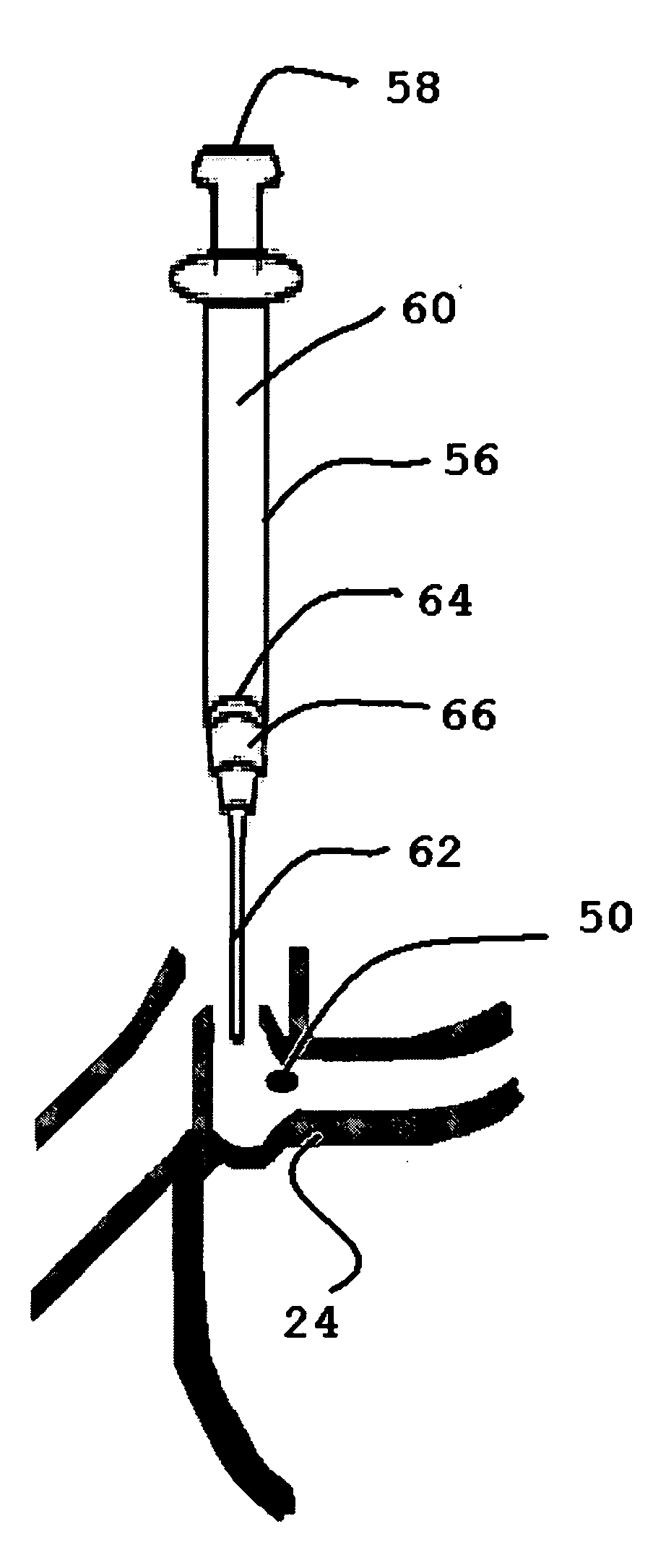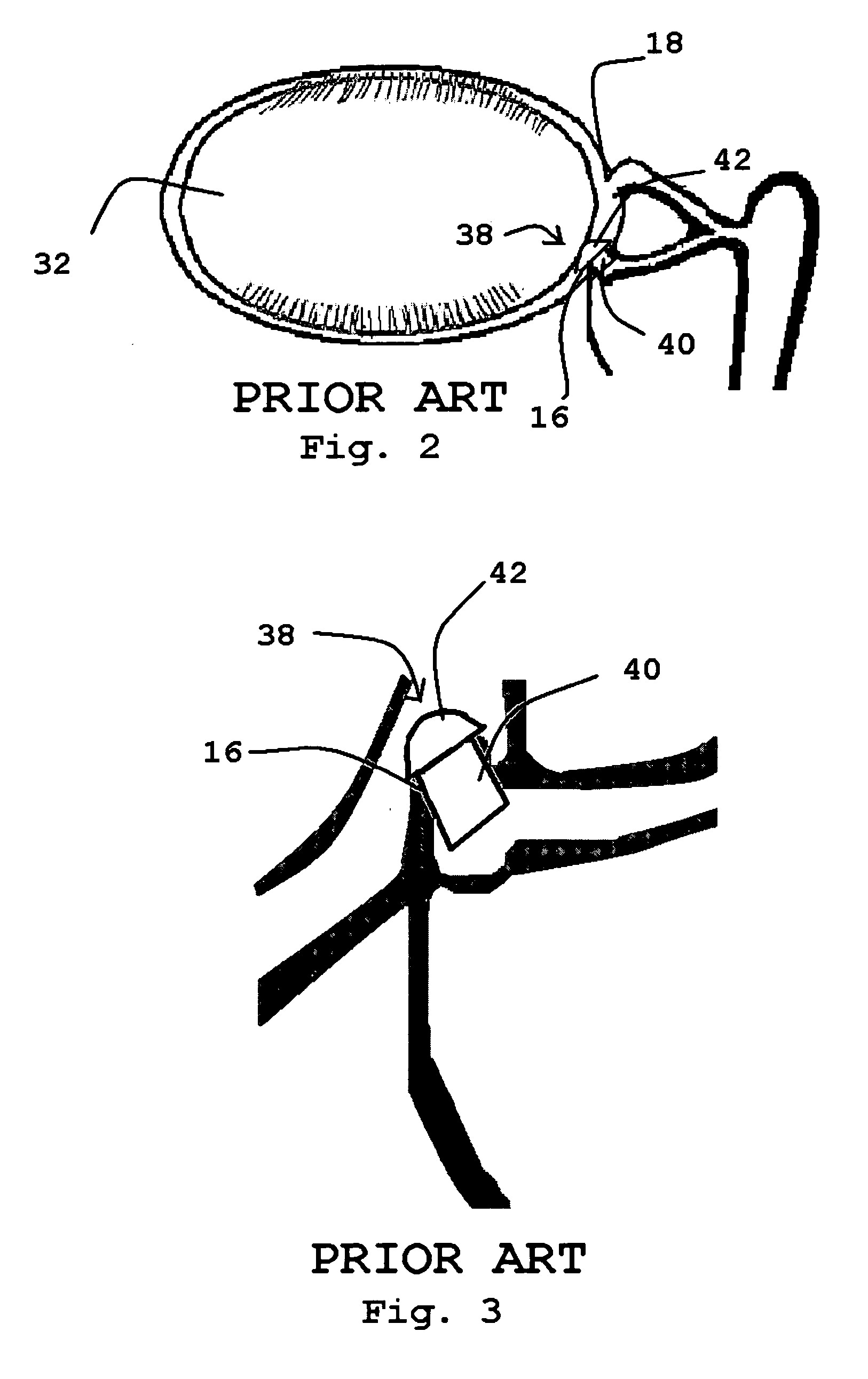Lacrimal filler
a technology of filler and lacrimal vein, which is applied in the field of lacrimal outflow system filler mechanism, can solve the problems of eye discomfort, insufficient moisture supply to the eye, and des can become so severe, and achieve the effect of preventing the erosion of the canaliculus lining
- Summary
- Abstract
- Description
- Claims
- Application Information
AI Technical Summary
Benefits of technology
Problems solved by technology
Method used
Image
Examples
Embodiment Construction
[0075]Referring to the drawings and, particularly, to FIG. 1, there is illustrated the human lacrimal system generally designated by the numeral 10. The lacrimal system 10 is divided into the secretory component or the lacrimal gland 12 and the excretory components that make up the lacrimal outflow system 14. The lacrimal outflow system 14 includes the puncta 16 and 18, the ampulla 20, the upper canaliculus 22, the lower canaliculus 24, common canaliculus 26, lacrimal sac 28, and nasolacrimal duct 30.
[0076]The eye 32 is positioned between the lacrimal gland 12 and the lacrimal outflow system 14. The eye 32 includes the medial canthal area 34. Tears pool within the medial canthal area 34 and enter the puncta 16, 18 to be eliminated through the lacrimal sac 28 into the nose (not shown).
[0077]The puncta 16, 18 are small orifices on the upper and lower lid margins, measuring 0.5-1.5 mm in diameter. The vertical ampulla 20 is typically 2 mm in length.
[0078]The canaliculi 22, 24 are essen...
PUM
| Property | Measurement | Unit |
|---|---|---|
| concentration | aaaaa | aaaaa |
| concentration | aaaaa | aaaaa |
| concentration | aaaaa | aaaaa |
Abstract
Description
Claims
Application Information
 Login to View More
Login to View More - R&D
- Intellectual Property
- Life Sciences
- Materials
- Tech Scout
- Unparalleled Data Quality
- Higher Quality Content
- 60% Fewer Hallucinations
Browse by: Latest US Patents, China's latest patents, Technical Efficacy Thesaurus, Application Domain, Technology Topic, Popular Technical Reports.
© 2025 PatSnap. All rights reserved.Legal|Privacy policy|Modern Slavery Act Transparency Statement|Sitemap|About US| Contact US: help@patsnap.com



